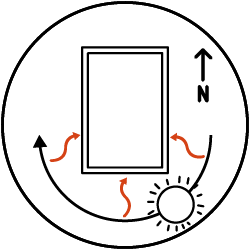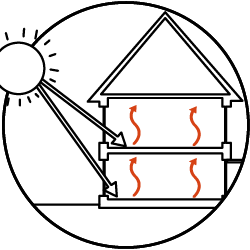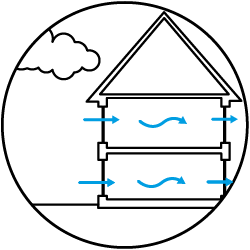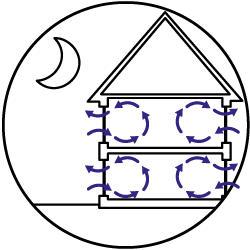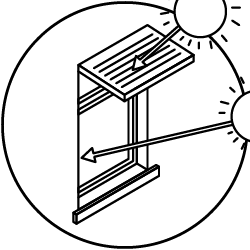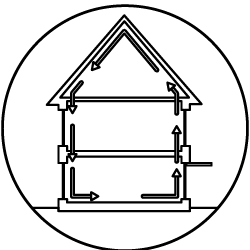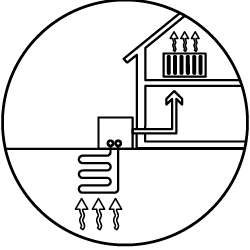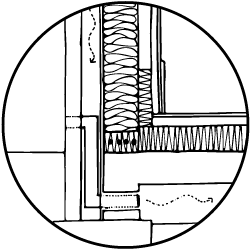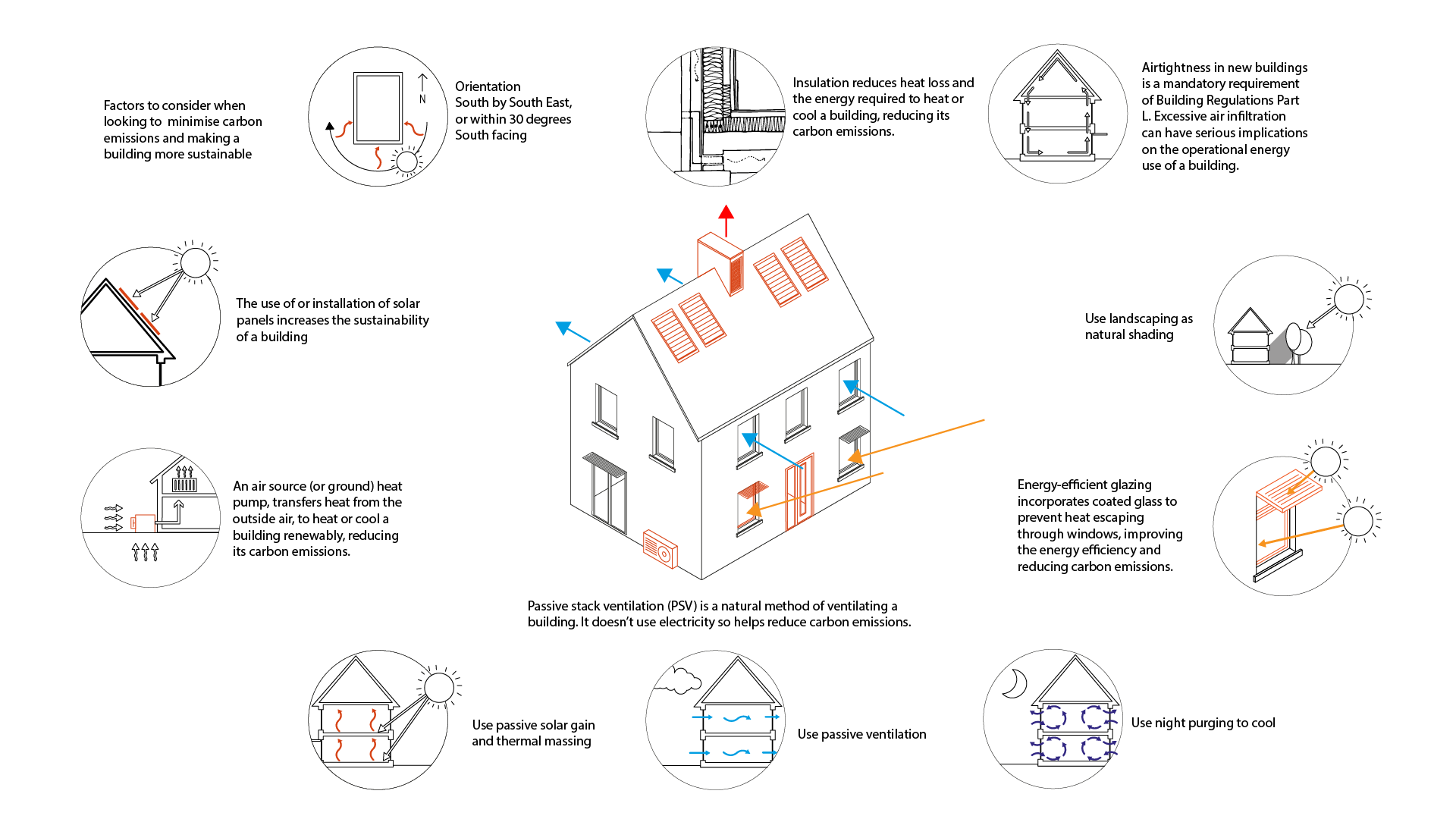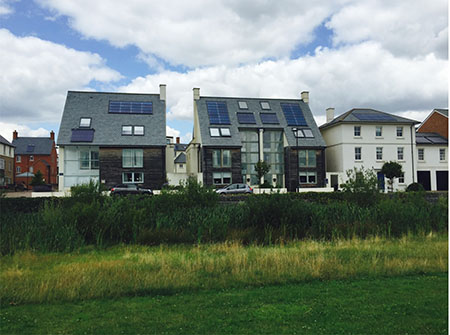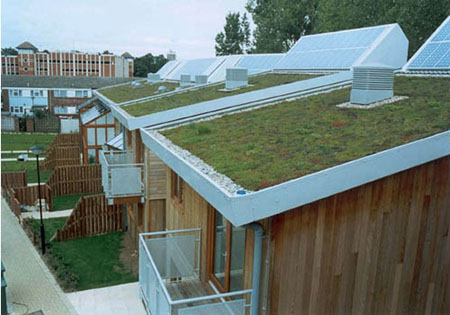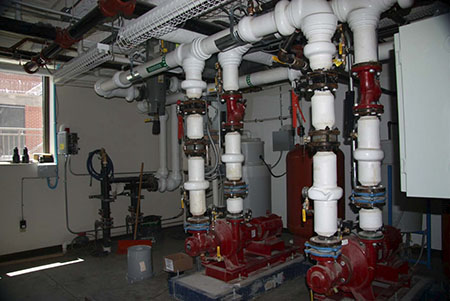Examples of design responses
- Orientation: Orientation, layout of habitable rooms, and window size should be carefully considered in relation to the sun path.
- Rooms that are most frequently occupied should benefit from a southerly aspect with appropriate measures to avoid overheating in place.
- Rooms that include a concentration of heat generating appliances (e.g. kitchens) or are less frequently occupied (e.g. bathrooms) should be located in the cooler part of the building, generally the northern side.
- Conservatories and atria can be used to assist natural ventilation in the summer by drawing warm air upward to roof vents and to collect heat during the spring and autumn.
- Deep projections that overshadow windows should be avoided, particularly on south facing elevations. Projections should be sized appropriately so that they provide shading from the sun during the hottest part of the year but allow solar gain in the colder months.
- A higher proportion of glazing on north facing elevations can increase natural lighting without significantly increasing solar gain, thereby minimising excessive heat gain.
- Where there is a chance that overheating could occur (e.g. due to large expanses of glazing on roofs and south facing elevations), design measures such as roof overhangs, brise soleil, external shuttering, photochromatic and thermochromic glass and a lighter colour palette can help.
- Zonal heating, ventilation systems and controls can be used allowing areas subject to high solar gain to occupy their own temperature control zone. Dynamic controls reduce energy waste.
- Use of materials to build in thermal mass to absorb excess heat during warmer periods and release it slowly during cooler periods (e.g. day/night, summer/winter).
- Buildings should be designed for passive ventilation: Cross ventilation with windows located on opposite walls and/or roof mounted turbines or wind cowls that assist with circulation of air by drawing air through windows or top floor openings and;
- passive stack ventilation (PSV) that uses pressure differences to draw in fresh air from outside should replace rising warm air which is released from the top of the building. A heat exchanger can be placed where the air escapes the building to reduce heat loss.
